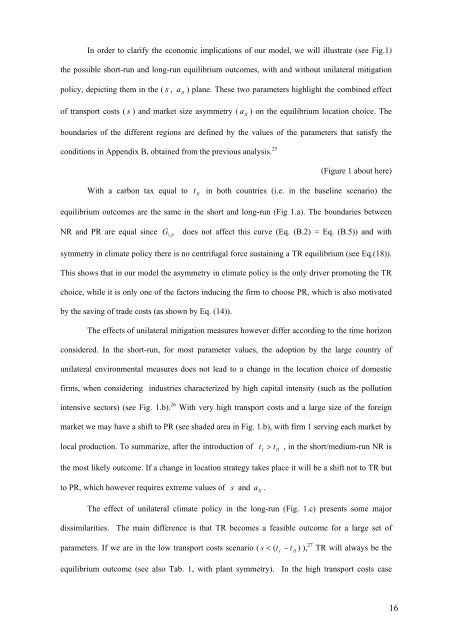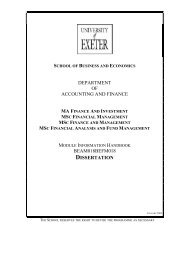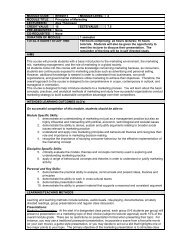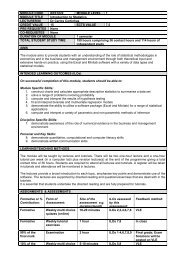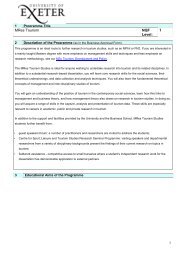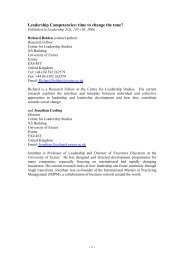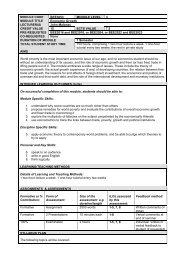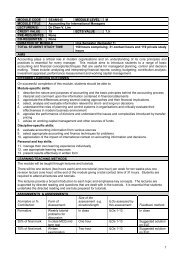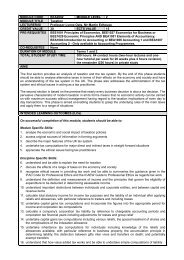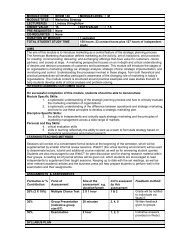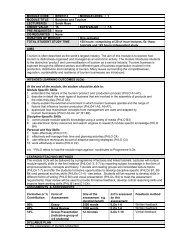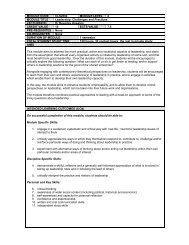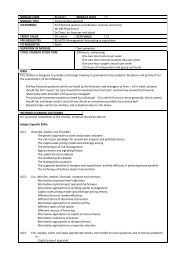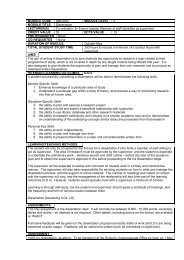Francesca Sanna-Randaccio paper - The Business School
Francesca Sanna-Randaccio paper - The Business School
Francesca Sanna-Randaccio paper - The Business School
Create successful ePaper yourself
Turn your PDF publications into a flip-book with our unique Google optimized e-Paper software.
In order to clarify the economic implications of our model, we will illustrate (see Fig.1)<br />
the possible short-run and long-run equilibrium outcomes, with and without unilateral mitigation<br />
policy, depicting them in the ( s , a II ) plane. <strong>The</strong>se two parameters highlight the combined effect<br />
of transport costs ( s ) and market size asymmetry ( a II ) on the equilibrium location choice. <strong>The</strong><br />
boundaries of the different regions are defined by the values of the parameters that satisfy the<br />
conditions in Appendix B, obtained from the previous analysis. 25<br />
(Figure 1 about here)<br />
With a carbon tax equal to t II in both countries (i.e. in the baseline scenario) the<br />
equilibrium outcomes are the same in the short and long-run (Fig 1.a). <strong>The</strong> boundaries between<br />
NR and PR are equal since h G 1 ,<br />
does not affect this curve (Eq. (B.2) = Eq. (B.5)) and with<br />
symmetry in climate policy there is no centrifugal force sustaining a TR equilibrium (see Eq.(18)).<br />
This shows that in our model the asymmetry in climate policy is the only driver promoting the TR<br />
choice, while it is only one of the factors inducing the firm to choose PR, which is also motivated<br />
by the saving of trade costs (as shown by Eq. (14)).<br />
<strong>The</strong> effects of unilateral mitigation measures however differ according to the time horizon<br />
considered. In the short-run, for most parameter values, the adoption by the large country of<br />
unilateral environmental measures does not lead to a change in the location choice of domestic<br />
firms, when considering industries characterized by high capital intensity (such as the pollution<br />
intensive sectors) (see Fig. 1.b). 26 With very high transport costs and a large size of the foreign<br />
market we may have a shift to PR (see shaded area in Fig. 1.b), with firm 1 serving each market by<br />
local production. To summarize, after the introduction of t I tII<br />
, in the short/medium-run NR is<br />
the most likely outcome. If a change in location strategy takes place it will be a shift not to TR but<br />
to PR, which however requires extreme values of s and a II .<br />
<strong>The</strong> effect of unilateral climate policy in the long-run (Fig. 1.c) presents some major<br />
dissimilarities. <strong>The</strong> main difference is that TR becomes a feasible outcome for a large set of<br />
parameters. If we are in the low transport costs scenario ( s ( t I t II ) ), 27 TR will always be the<br />
equilibrium outcome (see also Tab. 1, with plant symmetry). In the high transport costs case<br />
16


